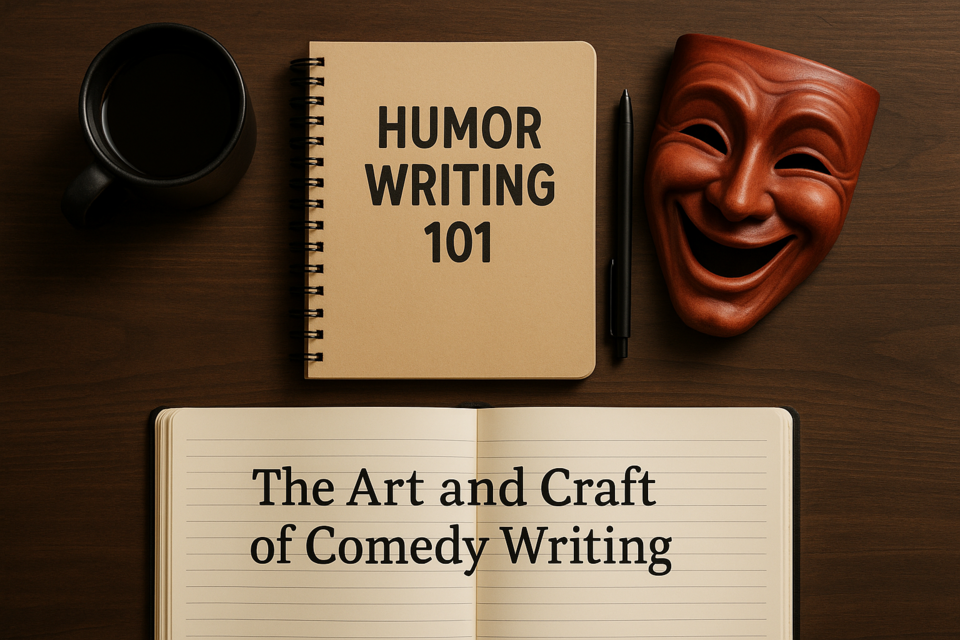Using the Show, Don't Tell Technique in Writing
Part of the beauty of the written word is that it comes alive on the page to bring a picture or image to the reader's mind. Have you ever read a book that was so great you could vividly see the characters in your mind? Have you ever read a scene from a book that was so well-written, it was almost as though you were right there witnessing every aspect of it? That kind of writing is truly the most awesome and effective writing possible. Writers who can achieve that in their words quickly become the most popular, in-demand writers around. They can accomplish any task with their words because they are truly gifted.
There is one rule that you need to learn and commit to memory right now for whenever you write. Show, don't tell. The rule is exactly as it sounds. It does not matter what you are writing, your words should always show what you mean, or show readers the action, the character, or the idea, rather than simply telling them about it. When you show instead of merely telling, you bring the reader into your words. You draw readers into what they are reading and make them part of the action, idea, or scene.
Look at the example passages below to see exactly what is meant by "show, don't tell."
|
The girl looked really pretty in her dress and not at all like the 18-year-old she really was. Grown men looked at her appreciatively. The attention made her feel giddy. |
In this passage, the reader is told two things about the girl: She looks pretty, and she looks happy. Any reader will take this as fact and apply it to any upcoming passages. If you would write something like this, you have achieved effectiveness with your words by telling the reader that the girl looks pretty and happy, but you have done nothing to draw your readers in and make them genuinely interested in the story unfolding. The reader is a mere observer. Let us be honest. What would you rather do, observe a party in progress or be part of the action? The latter, of course.
Look at the next passage that is a reworked version of the previous one.
|
The girl shimmered in her gold evening gown. Her auburn hair, swept up on top of her head, framed a pale face with pouty red lips. In that moment, the girl became a woman, and she knew it. All eyes paused on her as she walked past. Silence took over the loud fete as a large group of men standing by a tall set of French doors stopped mid-conversation to take in the sight of her. It was all she could do to swallow hard and contain her girly giggle. Instead, she tossed a smile at the gentleman and made her way to her date. |
Both passages above say the exact same thing, but one gives a lot more detail than the other. One tells. The other shows. When you show a reader what is going on, as in the second passage, you bring the reader into the scene. You create the vision or picture needed in a reader's mind to become captivated and interested in every word you write.
Avoid Too Many Narrative Summaries
It is tempting for any writer, regardless of skill level, to start writing long, rambling paragraphs to get an idea or story across. No doubt you have run into these in either your own writing or that of someone else. There will be dozens of paragraphs that simply tell you or the reader exactly what is going on, what has happened, or the facts about a certain situation. They serve as narrative summaries. These paragraphs may go on for pages. In some instances, chapters are formed around these paragraphs alone.
When you write, you get into a zone where what is in your mind just falls onto the paper. All writers do this. It is so easy to write narrative summaries because in your mind you see the scene unfold, or you envision the ideas, and it is second nature just to tell what you see on paper. However, you have to realize that long passages that only summarize what you see in your mind do little to interest the reader. In fact, they bore readers to tears and cause them to skim ahead to find something a little more interesting.
If you want to be a good writer, you have to learn how to edit out these long, narrative summaries, even if your first draft is full of them. There will be times when you will want to employ them. We will discuss that in just a minute. Most of the time, though, you are going to want to do away with them as much as possible and, instead, use other tools to show what is taking place, or what you want the reader to see, rather than summarizing and telling.
Dialogue
In fiction, one thing you can do to get rid of long-winded passages that tell, but do not show the reader what is going on, is employ dialogue. You can use dialogue as a tool to easily show the reader what is taking place. If your dialogue is good, it will draw readers into the action, and they will hear the characters' voices in their heads. For now, let us discuss how you can use dialogue to eliminate narrative summaries.
Take a minute to read the two example passages below. The first is a narrative summary. It tells the reader what is going on. The second passage shows the reader by using dialogue and eliminates the narrative summary altogether.
|
Passage One Mom told me to go to the store because she didn't have time before all of our guests showed up. She handed me $10 and said it would be more than enough to get all of what she needed. Twenty people would eat a lot, no doubt, so she wanted to be sure she'd have enough. I looked at the list she handed me. Ten dollars didn't seem like nearly enough, but Mom had been cooking all day already. She didn't look like she was in the mood for me to question her judgment. I didn't dare ask for more money. The way I figured it, I'd use some of my own money and get her to pay me back later, after everyone left and Mom relaxed. |
|
Passage Two Mom wiped the sweat from her brow, then pulled a crisp $10 bill from her purse. "Your aunts will be here in less than an hour. I need you to go to the store for me and get the things on this list." She grabbed a piece of paper from the table and shoved it in my hand, along with the money. "Mom, there are at least 10 items on this list," I said to her. "I need you to make sure you get all of them!" she said, squinting her eyes as she enforced the importance of the list with a stern voice. "You know how critical of me your aunts are. If one thing isn't perfect for this dinner, well, I'll never hear the end of it." I glanced over the list and saw $10 worth of things in the first few lines. I thought about telling her she'd need to give me more money if she really wanted everything, but I knew my Mom well enough to know that when she squinted her eyes when she spoke, she was just seconds from losing her cool. Instead, I nodded my head and remembered I still had a $20 bill in my purse to cover everything if I needed it. After my aunts left, she'd pay me back. "Yeah, they're pains," I agreed. "I don't know why you put up with them. But don't worry. I'll take care of everything." |
Which one of the two passages sounds better? Which one is more interesting to read?
Using Scenes
Another tool you can use to eliminate narrative summaries is to create scenes. A scene would be defined as a spot where a certain action takes place or something happens. It should be an action that you can isolate, and also highlight. Let us take a look at how this can be achieved rather easily. In this case, it is easier to use examples to show you how to create scenes rather than explaining how to do it.
Pull a book off your bookshelf right now. Please select a fiction book because this is where scenes occur. Open the book to a chapter somewhere midway through. Scan through the text and look for a break in the text. Most books are single-spaced. You want to look for a place where there is a double space. This marks a new scene.
Take note of the action taking place. Ask yourself what the action is, so that you define it clearly. What is happening in that scene? Think of the ways that the writer could have used a narrative summary to tell what happened, but instead showed it in the words of the scene. Anything that goes into a scene can be summarized. In fact, it is easier to summarize, but pay attention to how much more interesting and captivating a scene is to read.
Important elements of a scene:
-
Scenes have a location. You, the writer, must create a picture of the location for the reader.
-
It takes place in real time. Your readers see the events as they unfold.
-
They contain some action. Something happens.
-
They engage the reader.
Using these elements will ensure that you show the action instead of summarizing and telling about it. The good news is that the more you write scenes, the better yours will get. If you are a writer who is in the practice of writing long, narrative summaries, writing scenes may be difficult at first. However, as soon as you learn to show the reader the action that you see in your mind, you will find scenes get easier to write, and better, too.
The Dos and Do Nots of Narrative Summaries
As we mentioned earlier, there are some places where narrative summaries are okay. If your writing was just a series of scenes or constant dialogue, it would be just as tiring for the reader as one long, narrative summary would be. Think of it this way: Just as it is important to stagger your sentence types and structure, it is also important to stagger your writing tools, such as narrative summaries.
You can use narrative summaries to transition between scenes, or give back-history. A prime example is if you are writing about a woman who competes in beauty pageants. While it would be boring to the reader if you described every single pageant she attended because each one would start to sound the same, you can use a narrative summary to tell about a few of the past ones, then highlight one pageant as an important scene. In essence, you can employ narrative summaries to make your dialogue and scenes really stand out.
Just remember that if you do not get your readers to read the first page, then they are not going to read your story or book. That said, never use a narrative summary for the opening of your story or book. The opening should use action. It can be dialogue or a scene that shows action, but never open your story or book with a long-winded, boring narrative summary. Remember, you are supposed to show and not tell, because it engages readers and captures their interest. If you do not do that in the very beginning, it is not going to matter if you do it later on.


























